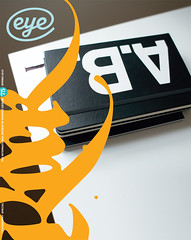Spring 2010
Culturing feedback on feedback culture
Limited Language: Rewriting Design: Responding to a feedback culture
Editors: Colin Davies and Monika Parrinder<br>Birkhauser, £18.99Blogs are easy to approach: you stumble on a link, read an article or two, comment and maybe ‘follow’. Books, even when they originate on a website (as Limited Language does), demand more thorough reading.
Commenting is painless on the editor’s limitedlanguage.org website. In contrast to the book – a weighty compilation of articles, analysis and comments – the experience of the site is porous and layered: visibly built up by many contributors, absorbed in uneven increments of time, momentarily finished whenever a stack of comments trails off into the unremarkable hiss of dying interest. It is exactly this porosity that the book takes as its central theme.
It turns out that the easy experiences of reading and commenting on the blog are the research, and the book is the report. Colin Davies and Monika Parrinder articulate the relationships experienced on the site, and their proposed consequences for design criticism, in the book’s print-only introduction. They assert that the processes by which design has limited language in the visual realm (to snippets, top-ten lists, smss) can be used to inspire new modes of generating writing. In particular, they argue, the ‘cutting, pasting and recycling’ that are staples of design culture can be consciously employed in a new, relational, way of criticism. The articles in the book, constructed by means of the Limited Language platform for input and feedback, are provided as evidence for the effectiveness of this method.
The editors’ critical approach can be situated in the context of Nicolas Bourriaud’s theory of relational aesthetics. Given that social communication today is limited to locations of commercial exchange, Bourriaud suggests that art can provide context for alternative forms of interaction and temporary everyday utopias. But although Parrinder and Davies note that design can similarly ‘activate the social’, their argument in Limited Language centres on the idea that criticism can benefit from a broadly-interpreted relational framework. Here words, like artworks, are commodities, and Limited Language is a brand. Through exchange, re-use and recycling, words can access an alternative commerce – become social interstices – by means of which it is possible ‘to enrich, expand and hopefully capture the serendipity of creative process’. The blog, with its expectation of instant feedback and multiple contributors, was the natural medium to develop this kind of criticism.
As predicted by its editors, Limited Language did not so much generate new critiques as broach relevant themes in a lively context. For instance, a ‘starter article’ on ‘Speech, writing, print’ posted by Michael Clarke on the website in 2005 asks what relation respondents see today between words and their arguable associations with meaning and writing, authors and readers. In the responses that follow, his questions are reincarnated in diverse forms. One contributor asks: ‘Has the possibility of radical typographic experiment in print now passed because it can no longer open up language for a reader?’ Another queries: ‘If [the internet] does indeed lack content, does it merely give us pseudo- or simulated content, or could we credit it with ... giving us something different?’ Other essays deal with ethics in the contexts of capitalism and resistance, the workplace and the non-design world. The general bent is collaborative and process-focused, emphasising that a feedback relationship is not exclusive to criticism but can exist as well among designers, clients and environments. The revival of this persuasion from the 1960s is remarkable, although I did ask myself how contingent it is to the theoretical grounding offered by the book.
In print these conversations are in any case less successful. In a second column on each page sits a ‘reflection’ on the original essay, with excerpts from one or two comments. This commentary is enriching but usually long enough to warrant a second essay. Given that few readers will be able to absorb commentary and original text simultaneously, it might have made sense to place the reflection after the starter article in order to avoid abundant empty space. In addition, while faulty grammar may be acceptable on the internet, in a book it makes prolonged reading difficult.
The slightly ill-fitting feel of the book probably stems from its ambiguous place in the whole project: on the one hand the editors suggest that their publication is ‘a starting place, [where] every article ends with a url for the conversation to continue’; on the other, as the summation of research, it feels like a finished project – and its comprehensive introduction presents it as such. Still, while the blog seems effective on its own, it is helpful to have such a ‘lamination’ of the project with its more detailed methodological explanation. Book or no, Limited Language has already generated worthwhile debates.
First published in Eye no. 75 vol. 19 2010
Eye is the world’s most beautiful and collectable graphic design journal, published quarterly for professional designers, students and anyone interested in critical, informed writing about graphic design and visual culture. It is available from all good design bookshops and online at the Eye shop, where you can buy subscriptions and single issues.

